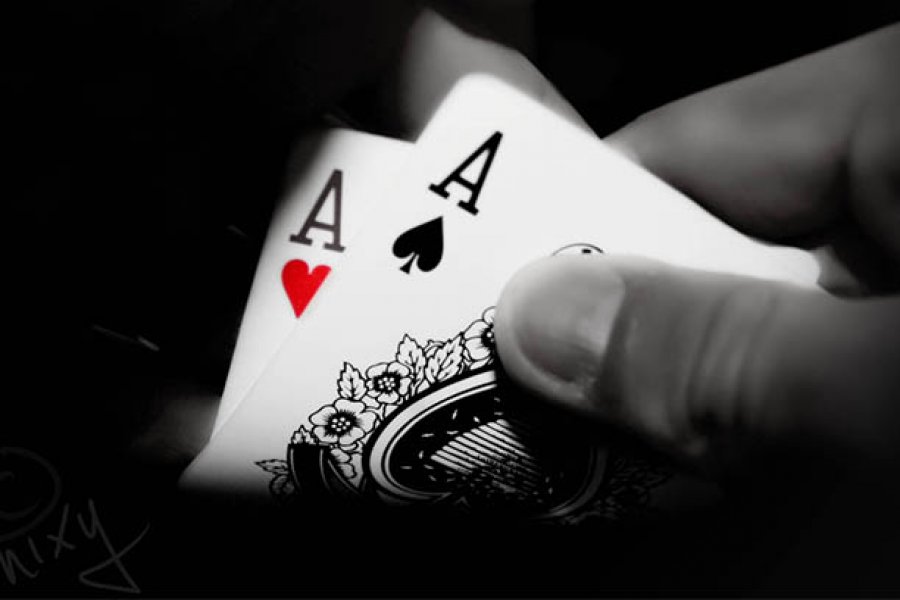How to Handle Multi-Way Action
9 years ago

11 Sep
(Photo: Rounders.org)
When it comes to poker strategy heads up situations seem to be all that everyone cares about. Even in coaching videos and strategy articles regarding 6-max and 9-max poker variants, the only thing you ever see or read about are heads up pots. This is of course somewhat understandable because, in online poker, situations in which more than two players are still in the hand once the flop is dealt are somewhat rare, but this isn't necessarily true for live poker. Multi-way pots are complicated and we often fail to give them the attention they deserve which is a shame since they can also be very profitable when played correctly.
Hand Selection
Every good decision in poker starts with a proper range selection and paying attention to the preflop dynamics. While you can't exactly tell which pot will get multi-way it's your job as a poker player to make educated guesses based on limited information. Call happy loose-passive players sitting behind you greatly increase the chance of the pot going multi-way especially once you elect to cold call and given them great odds to come along with marginal hands.
While loose-passive players aren't always aware of the concept of odds they like calling and the more people in the pot the higher the potential upside of a passive play is. Knowing that, you can optimize your range selection and include less disconnected high card hands that work great in heads up pots (like A9o, KTo etc.) in favor of hands with great playability and implied odds (suited connectors, suited aces etc.). Flopping Ks9s4d while holding KTo is great when we're only facing one opponent and while it's still a good situation multi-way the reverse implied odds become dangerously high. As2s on that board isn't really a value hand but it has a tremendous potential in a 3 or 4-way pot.

Playing Fast with Value
In the multi-way pot, the equity share of your opponents will be higher than heads up. It's also a lot more likely that at least one of your opponents managed to connect with the board. This is way playing your value hands fast becomes absolutely essential especially on wet boards. You can't really rely on your opponents to inflate the pot with marginal holdings (or air) and while check/raising something like 44 on a KsQd4s might be tempting, a lead bet is much more reliable.
It's not a good idea to give away cheap cards to many possible draws and backdoor draws. Also if you manage to get more than one call after making a lead bet the stack to pot ratio can sometimes get so small that you can shove the turn for max value without overbetting the flop. There are of course exceptions and it might be worth to try to go for a check/raise against complete maniacs but versus the vast majority of the player population, taking responsibility for managing the size of the pot with a good size lead bet, is the way to go.
Small Bluffs - Big Value, Big Bluffs - Big Trouble
Like we already mentioned people tend to be very honest in multi-way pots. Players are far less likely to make loose bets with marginal or no equity and there are good reasons for that. If you have something like 7c8c on an As7h2c board against QdJd you can feel pretty good with around 80% equity. If you add TdKs to the mix suddenly your equity drops to 60%. Add another player with 33 and now it's only 50%. Adding to that the fact that with every subsequent player your fold equity starts plummeting and we have a very clear reason why dishonest plays with marginal hands are far less attractive than they are in heads up pots.
That being said in the metagame where everyone is honest it pays to be a bit dishonest. Your average player won't be interested in stealing a multi-way pot and that's why it's important to add that play to your own arsenal. Cheeky triple barrel bluff with air will often result in a lost stack, but when the pot gets checked down twice and you're in position feel free to fire of two barrel especially if you have some kind of equity to back that up. Fighting for multi-way pots can be a great way of gaining an edge over the opponents.

A Word About Game Theory
As a general rule, the more players there are in the pot the harder it is to solve the situation using game theory. This is doubly true for such a complicated game as poker. This is why the attempt to solve multi-way situations using software will be somewhat inefficient. If you want to improve the way you play against more than one opponent forget about equilators and focus on the table dynamics.
Look for the tables where multi-way pots are more likely to occur and adjust your ranges accordingly. When you find yourself in a hand against more than one opponent focus less on balancing your ranges and more on exploiting your opponent's tendencies. There's no point in carrying about balance when you can't ever know what balanced range really looks like in a 3 or 4-way pot.







Comments
You need to be logged in to post a new comment